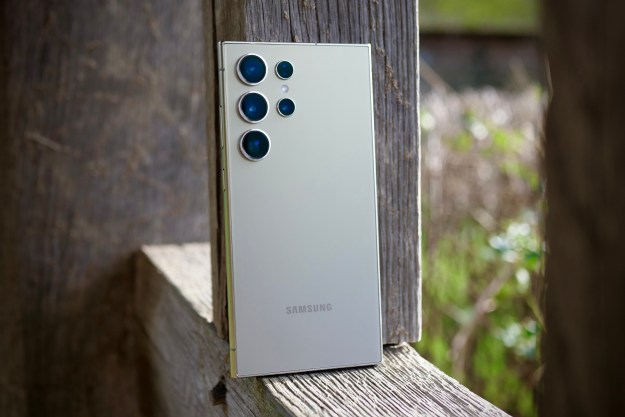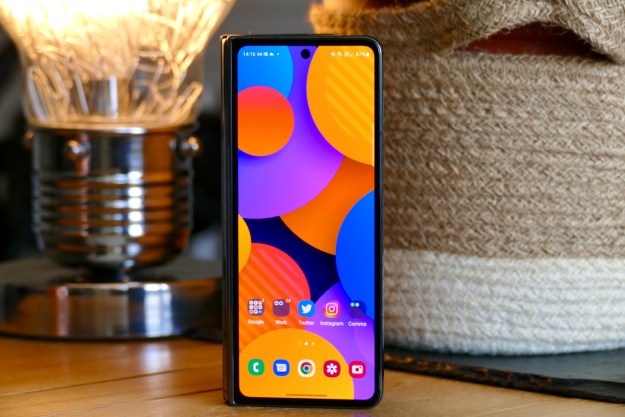After months of rumors, the Samsung Galaxy Note 20 is finally here. The phone, announced at Galaxy Unpacked on August 5, is poised to be one of the best of the year, thanks to its powerful specifications, stunning design, and more.
But Samsung actually launched two Galaxy Note 20 models — a standard Galaxy Note 20 and a Galaxy Note 20 Ultra. As the name suggests, the Note 20 Ultra is the more expensive device, and it comes with a number of advanced features and faster components. Here’s everything you need to know about how the two models differ.
Spec comparison
| Samsung Galaxy Note 20 | Samsung Galaxy Note 20 Ultra | |
| Size | 75.2 x 161.6 x 8.3 mm | 77.2 x 164.8 x 8.1 mm |
| Weight | 192g | 208g |
| Screen size | 6.7-inch | 6.9-inch |
| Screen resolution | Full HD+ | WQHD+ |
| Operating system | Android 10 | Android 10 |
| Storage space | 256GB | 256GB / 512GB |
| MicroSD card slot | No | Yes |
| NFC | Yes | Yes |
| Processor | Qualcomm Snapdragon 865 Plus | Qualcomm Snapdragon 865 Plus |
| RAM | 8GB | 12GB |
| Camera | Triple lens rear (12MP main, 64MP telephoto, 12MP ultrawide), 10MP front | Triple lens rear (108MP main, 12MP telephoto, 12MP ultrawide), 10MP front |
| Video | Up to 8K at 24 fps | Up to 8K at 24 fps |
| Bluetooth version | Bluetooth 5.0 | Bluetooth 5.0 |
| Ports | USB-C | USB-C |
| Fingerprint sensor | Yes, in-display | Yes, in-display |
| Water resistance | IP68 | IP68 |
| Battery | 4,300mAh | 4,500mAh |
| App marketplace | Google Play | Google Play |
| Network support | LTE / 5G | LTE / 5G |
| Colors | TBD | TBD |
| Price | $1,000 | $1,300 |
| Buy from | Samsung | Samsung |
| Review score | Hands-on | Hands-On |
Design, display, and durability

The Samsung Galaxy Note 20 series doesn’t necessarily represent a major design shift, but there are a few differences compared to previous-generation Note devices. Both new devices offer an edge-to-edge display with a hole-punch camera cutout in the center of the top of the display. On the back of both phones, there’s a rectangular camera bump, which protrudes quite a bit from the back of the phone. It’s more prominent on the Note 20 Ultra, but it’s still pronounced on both.
Around the edges, both phones have a volume rocker, a power button, and a USB-C port. There’s no Bixby button to be seen on either device, and they both have a port for the S Pen on the bottom of the phone.
Of course, the biggest difference between these two phones is their size. The Galaxy Note 20 offers a 6.7-inch display, while the Galaxy Note 20 Ultra boasts a whopping 6.9-inch display. There are other differences too — the standard device has a Full HD+ resolution (the “+” references the 20:9 aspect ratio) and a 60Hz refresh rate, while the larger Galaxy Note 20 Ultra steps things up to a WQHD+ resolution with a 120Hz refresh rate. Safe to say, while the Galaxy Note 20 has a solid display, the Galaxy Note 20 Ultra takes it up a notch. Both phones also have an in-display fingerprint sensor, which is ultrasonic.
Both devices are largely built from glass, so it’s worth doing your best to ensure you don’t drop them. Thankfully, however, they both have an IP68 rating, so while they’re not necessarily built to withstand swimming, they should survive an accidental dunk in the bath or pool.
Both of these phones look good, and both have great displays, but the display on the Galaxy Note 20 Ultra is better — so it’s the winner here.
Performance, battery life, and charging

Under the hood, the performance of the Galaxy Note 20 and Note 20 Ultra is similar, though again, the Note 20 Ultra is likely to be slightly better. While both phones offer a Qualcomm Snapdragon 865 Plus processor in the U.S. or an Exynos 990 processor elsewhere, the Note 20 has just 8GB of RAM while the Note 20 Ultra steps things up to 12GB.
That’s likely to make it a little better at handling some multitasking. Still, both phones are among the most powerful Android devices on the market — so don’t assume that just because the Note 20 has a little less RAM that it’s unable to handle certain tasks.
The standard Note 20 has a 4,300mAh battery, while the Note 20 Ultra boasts a 4,500mAh battery. While the Note 20 Ultra’s battery is bigger, that doesn’t necessarily translate to a longer battery life, especially given the fact that the Note 20 Ultra has a higher-resolution display. We’ll have to wait and see how the batteries compete. Thankfully, they both charge in a myriad of ways, including fast charging at up to 25W. They both also support 15W wireless charging, and even support device-to-device charging at up to 4.5 watts.
Camera

Apart from size, the camera is perhaps one of the main differences between these two phones. Let’s compare these cameras sensor by sensor.
The main sensor on the standard Note 20 comes in at 12 megapixels, while the one on the Note 20 Ultra sits in at 108 megapixels. Both offer optical image stabilization and an f/1.8 aperture, however the 108-megapixel resolution on the larger device enables features like Samsung’s Space Zoom, which supports up to 50x zoom on this device.
The telephoto lens on the standard Galaxy Note 20 comes in at 64 megapixels, with an f/2.0 aperture and hybrid zoom at up to 3x. On the Galaxy Note 20 Ultra, you’ll get a 12-megapixel telephoto lens, however it supports up to 5x optical zoom, despite the f/3.0 aperture.
The ultrawide lens on both of these phones comes in at 10 megapixels with an f/2.2 aperture, while the front-facing camera is 10 megapixels with an f/2.2 aperture.
We have yet to fully test the cameras on these two phones, but at least on paper, the Galaxy Note 20 Ultra has a more feature-rich camera array, so it’s the winner here.
Software and updates
The Galaxy Note 20 and Note 20 Ultra come with Samsung’s One UI, and the latest version is built on Android 10. One UI offers a very Samsung-y design, with colorful logos and a ton of customization options. Some argue that it’s a little harder to use than more stock Android approaches, and there are likely to be some apps that come with the device that you may not need.
Samsung doesn’t have the best track record when it comes to Android updates, but considering this is a flagship phone, it is likely to get updates for at least a few years. There’s no guarantee that they’ll be that timely, and if you want quick updates, it’s worth looking into a Pixel device instead.
Special features

The Samsung Galaxy Note series has long offered some features that other phones just don’t. Perhaps the most notable of these is the S Pen, which slides into the bottom of the phone when you’re not using it, and can seriously come in handy for things like note-taking. Samsung has made some serious improvements here, and latency is down to 9ms. A quick menu also shows up when you take the S Pen out of the phone, allowing you to quickly access features that you might want to use with the S Pen.
Both phones also offer compatibility with Samsung DeX, allowing you to use your phone in desktop mode, by plugging it into a monitor. New for this year, you can also use it in wireless mode with a compatible smart TV.
Price and availability
Both the Galaxy Note 20 and the Galaxy Note 20 Ultra will be available starting on August 21. The standard Galaxy Note 20 comes in at $1,000, while the Note 20 Ultra costs $1,300.
Overall winner: Samsung Galaxy Note 20 Ultra
As we said at the beginning, it’s hard to deny that the Galaxy Note 20 Ultra is a much better device. With a higher-resolution display and a better camera, if you want the best experience, the more expensive phone is the way to go.If you’re a Samsung fan that doesn’t want to spend all that cash, you’re still getting a flagship phone with the standard Galaxy Note 20 — and if you don’t really care about the highest resolution display or those extra camera features, you probably won’t miss them.
Editors' Recommendations
- The best Samsung Galaxy Z Fold 4 deals
- Samsung has a new (and cheaper) way to buy the Galaxy S23
- Best Samsung Galaxy Z Flip 5 deals: Get the foldable for free
- A surprise phone just beat the Galaxy S24 Ultra in a big way
- Samsung’s Galaxy AI is about to get a lot more useful


